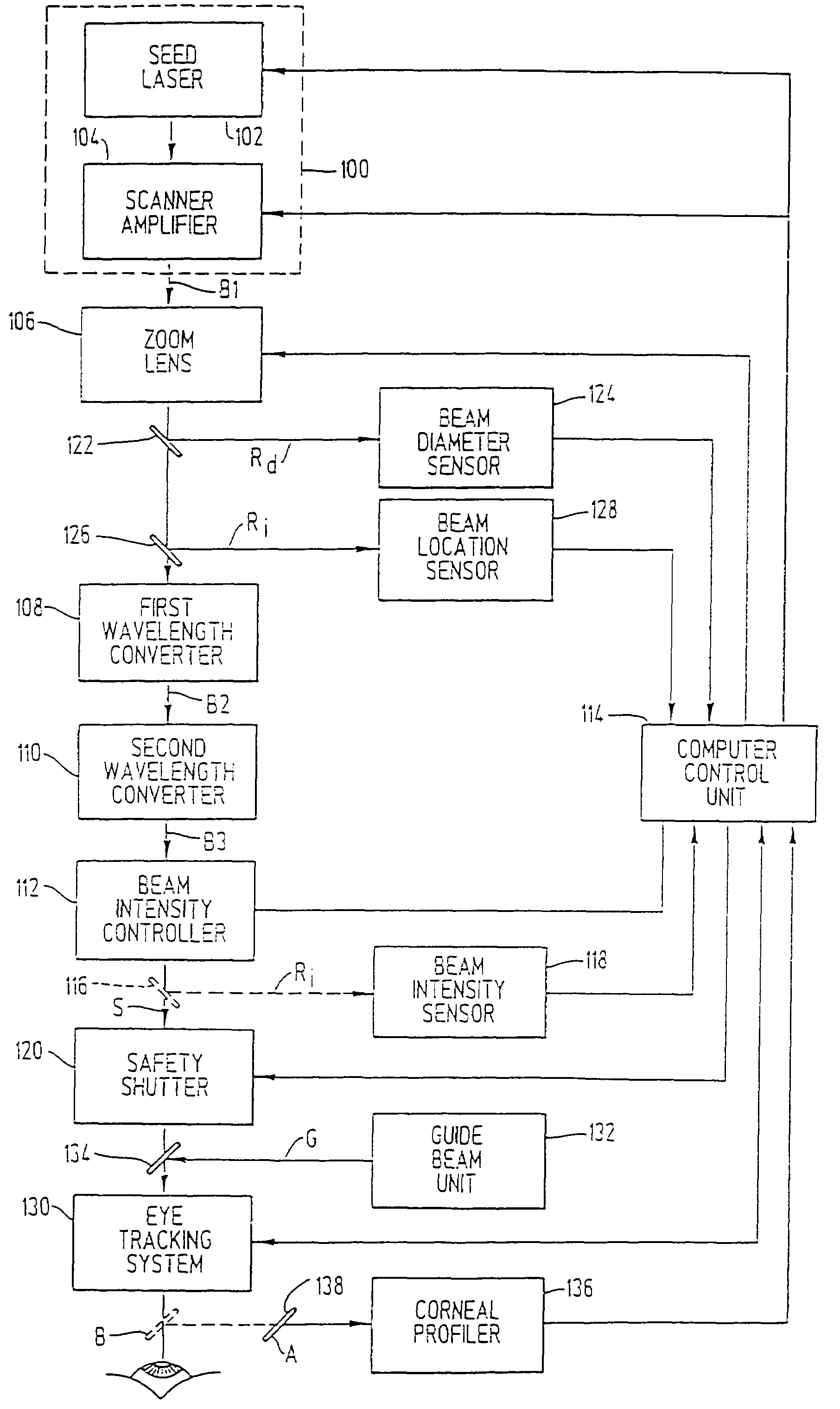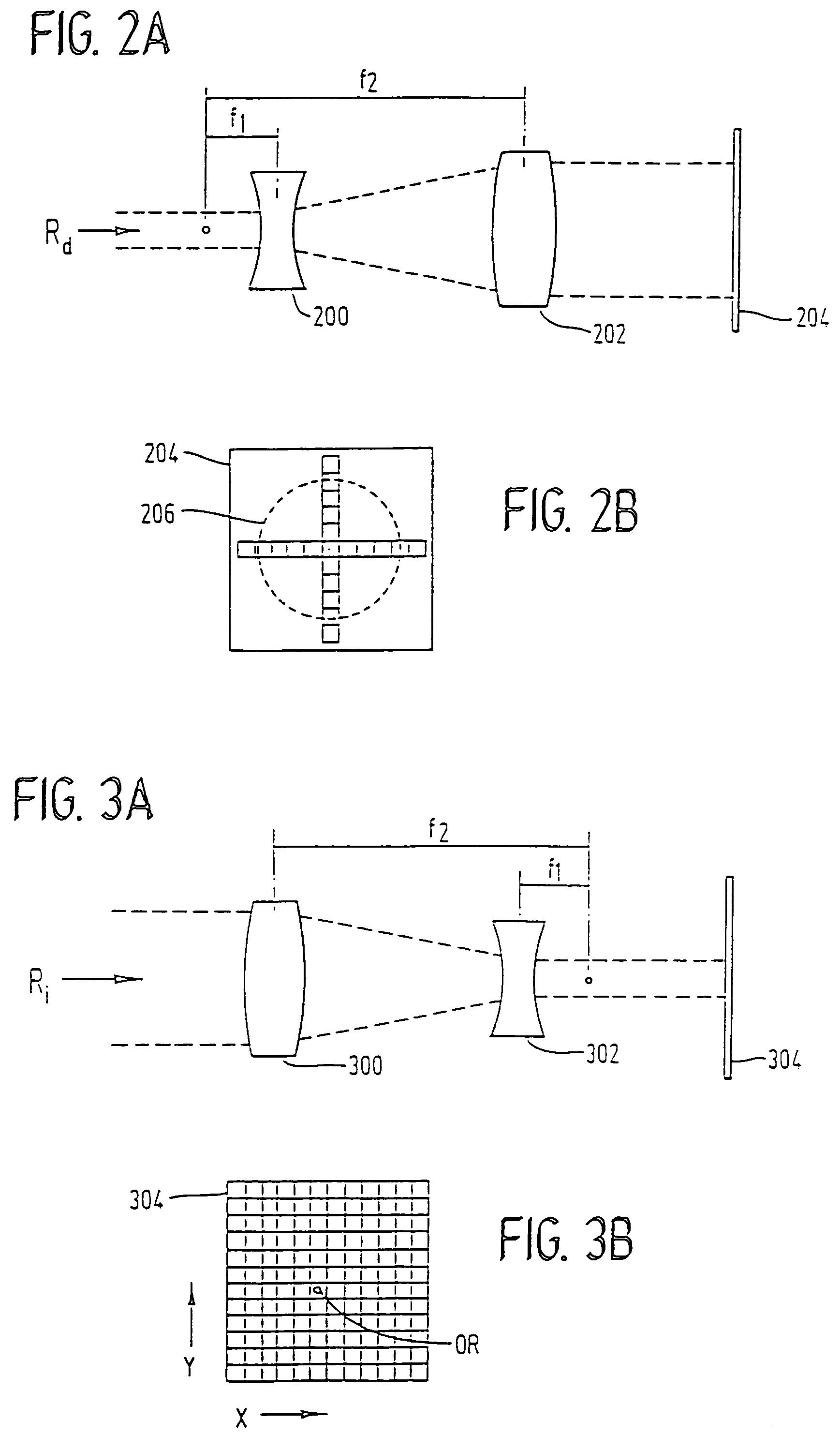Method and apparatus for laser surgery of the cornea
a laser surgery and corneal technology, applied in the field of corneal laser surgery, can solve the problem that the importance of the optical quality of the cornea cannot be over-emphasized, and achieve the effect of high excitation density
- Summary
- Abstract
- Description
- Claims
- Application Information
AI Technical Summary
Benefits of technology
Problems solved by technology
Method used
Image
Examples
Embodiment Construction
[0117]Throughout this description, the preferred embodiment and examples shown should be considered as exemplars, rather than limitations on the method and apparatus of the present invention.
[0118]Background Information
[0119]The laser apparatus and system disclosed in this invention is for achieving two principal objectives:
[0120](1) The damage zone underneath the material ablated by the present laser system must be substantially reduced in comparison to prior art laser systems.
[0121](2) For each laser pulse deposited on the cornea, a definite predetermined depth of tissue is to be ablated. The ablated depth per laser pulse must be controllable and about 0.2 microns or less, and preferably about 0.05 microns or less.
[0122]A brief discussion on the mechanism of the ablation process is useful to understand how the stated objectives can be achieved by the teaching of the present invention. It is a well-known fact that laser ablation can occur when the laser beam intensity is increased ...
PUM
| Property | Measurement | Unit |
|---|---|---|
| diameter | aaaaa | aaaaa |
| wavelengths | aaaaa | aaaaa |
| etch depth | aaaaa | aaaaa |
Abstract
Description
Claims
Application Information
 Login to View More
Login to View More - R&D
- Intellectual Property
- Life Sciences
- Materials
- Tech Scout
- Unparalleled Data Quality
- Higher Quality Content
- 60% Fewer Hallucinations
Browse by: Latest US Patents, China's latest patents, Technical Efficacy Thesaurus, Application Domain, Technology Topic, Popular Technical Reports.
© 2025 PatSnap. All rights reserved.Legal|Privacy policy|Modern Slavery Act Transparency Statement|Sitemap|About US| Contact US: help@patsnap.com



